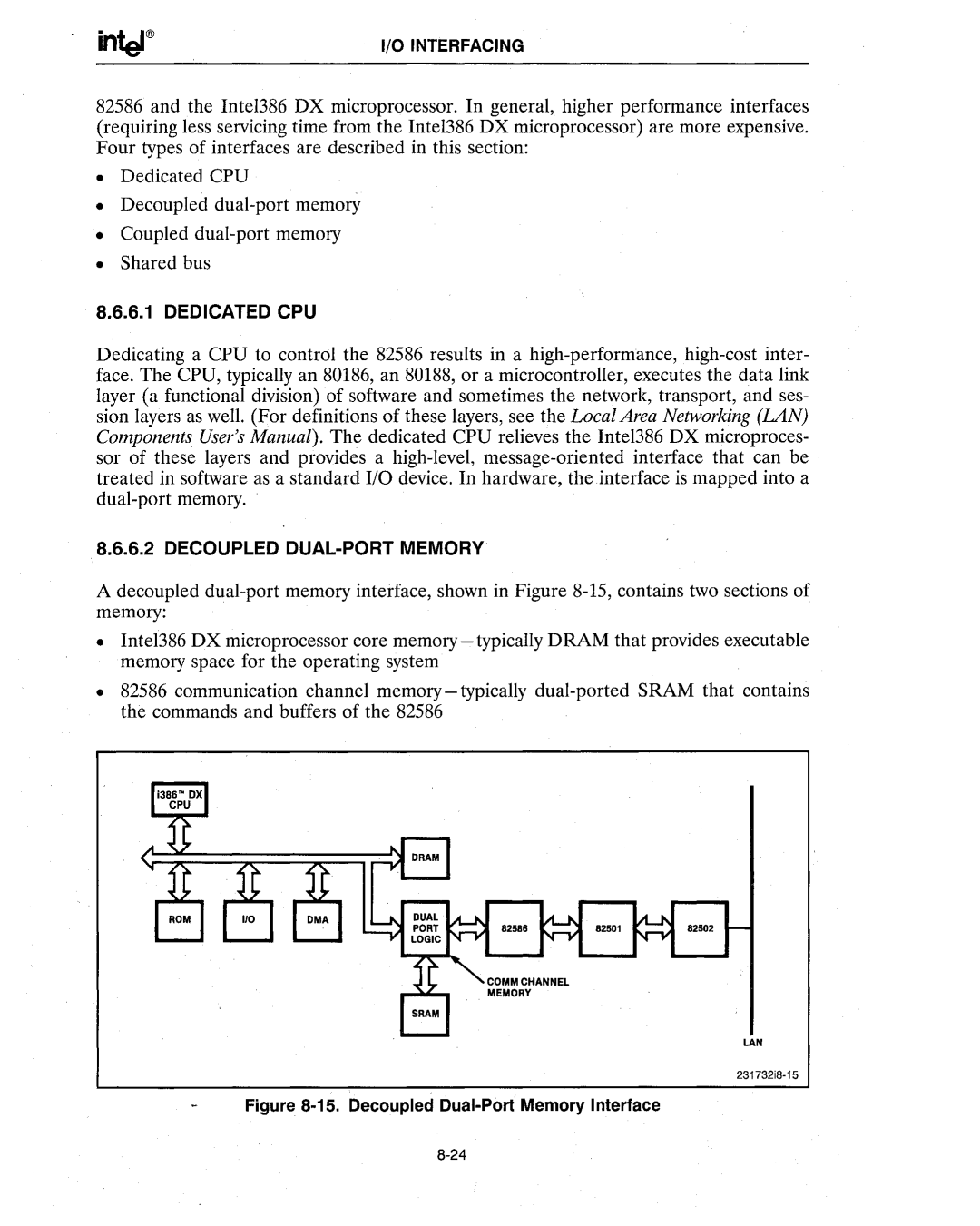I/O INTERFACING
82586 and the Intel386 DX microprocessor. In general, higher performance interfaces (requiring less servicing time from the Intel386 DX microprocessor) are more expensive. Four types of interfaces are described in this section:
•Dedicated CPU
•Decoupled dual-port memory
•Coupled dual-port memory
•Shared bus
8.6.6.1DEDICATED CPU
Dedicating a CPU to control the 82586 results in a high-performance, high-cost inter- face. The CPU, typically an 80186, an 80188, or a microcontroller, executes the data link layer (a functional division) of software and sometimes the network, transport, and ses- sion layers as well. (For definitions of these layers, see the Local Area Networking (LAN) Components User's Manual). The dedicated CPU relieves the Inte1386 DX microproces- sor of these layers and provides a high-level, message-oriented interface that can be treated in software as a standard I/O device. In hardware, the interface is mapped into a dual-port memory.
8.6.6.2 DECOU PLED DUAL-PORT MEMORY
A decoupled dual-port memory interface, shown in Figure 8-15, contains two sections of memory:
•Inte1386 DX microprocessor core memory-typically DRAM that provides executable memory space for the operating system
•82586 communication channel memory-typically dual-ported SRAM that contains the commands and buffers of the 82586
82502
LAN
231732;8·15
Figure 8·15. Decoupled Dual·Port Memory Interface
8-24

